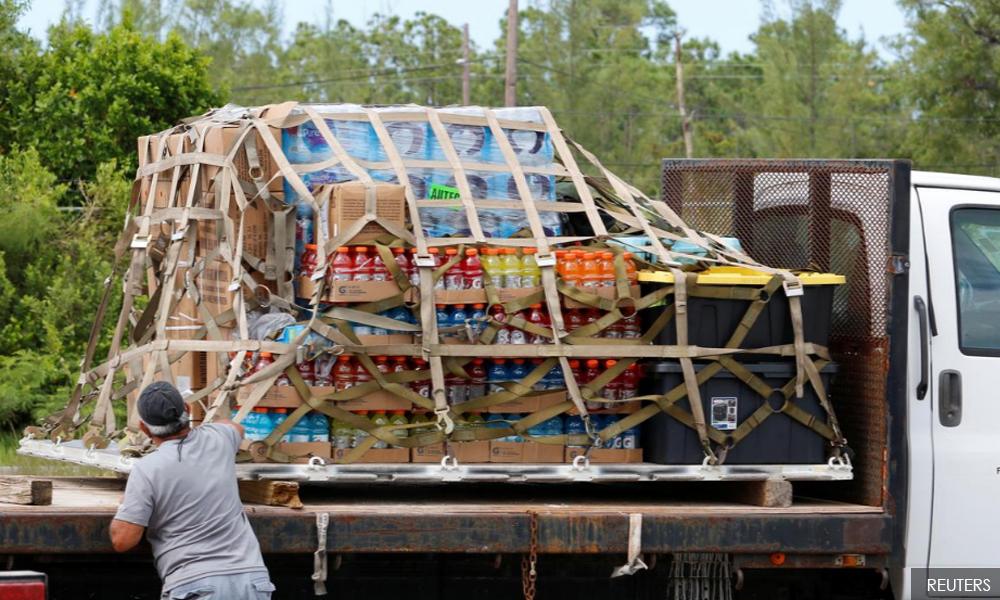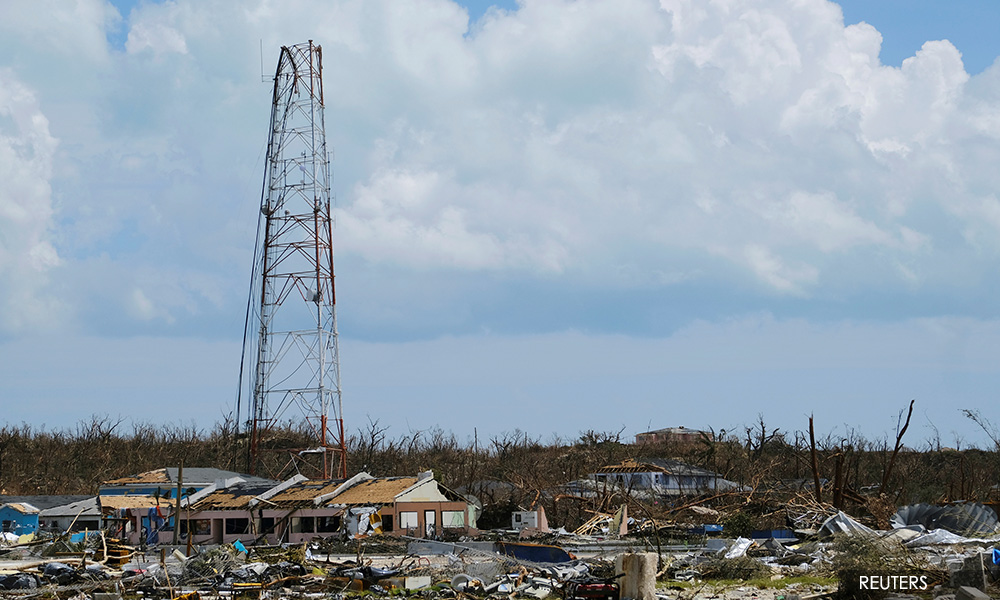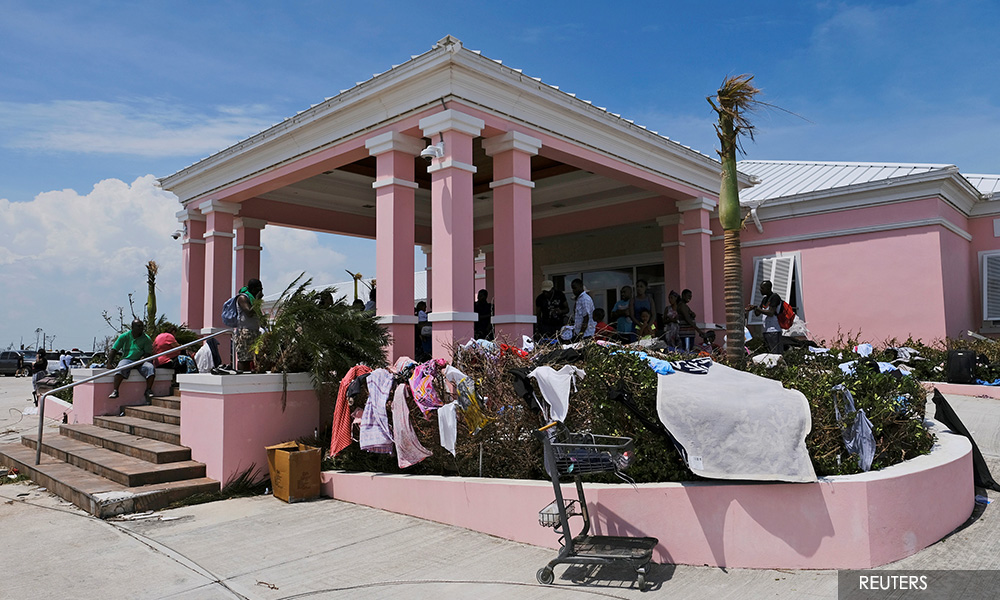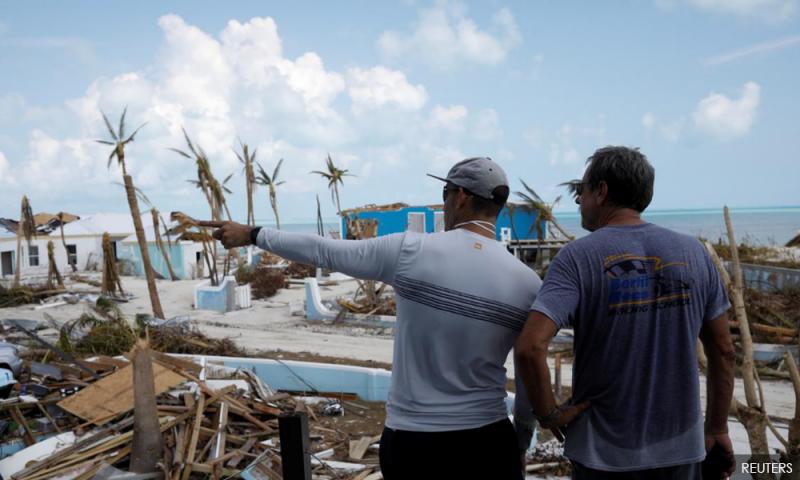Living conditions 'rapidly deteriorating' after storm in Bahamas
Thousands of displaced people are living in “rapidly deteriorating” conditions in the worst-hit parts of the Bahamas six days after Hurricane Dorian made landfall, the United Nations World Food Programme warned on Saturday.
The warning came as aid groups rushed emergency help to the storm-ravaged islands and officials warned a death toll of 43 was likely to spike higher as the number of missing among the archipelago nation’s 400,000 residents becomes clear.
Even as the aid ships and aircraft headed in, thousands fled the devastation, some abandoning hard-hit Great Abaco Island to seek safety in the capital, Nassau, and others heading to Florida for shelter, supplies and perhaps jobs.
Some 90 percent of the homes, buildings and infrastructure in Marsh Harbour, where Dorian rampaged for almost two full days as one of the strongest Caribbean hurricanes on record, were damaged, the World Food Programme said.
It noted that thousands of people were living in a government building, a medical centre and an Anglican church that survived the storms, but had little to no access to water, power and sanitary facilities.
“The needs remain enormous,” WFP spokesperson Herve Verhoosel said in an email Saturday. “Evacuations are slowly taking place by ferry, as hundreds of residents reportedly flee daily.”

One of those who fled Abaco was 19-year-old Isaiah Johnson, who was staying in a hotel in Nassau with his mother and three sisters after the storm’s 320km/h winds destroyed their homes.
A wealthy friend had paid for a two-week stay, but after that it was unclear where they would go.
His mother was searching for work in the United States, Johnson said, reckoning that jobs would be hard to find in Nassau.
“Two weeks might be enough time for me to figure things out,” Johnson said on Saturday. “For my mom, I’m not so sure.”
A cruise ship with more than 1,000 evacuees arrived in south Florida on Saturday. Some had small children or ageing relatives who they hoped to find safe lodging for before returning to try to repair or rebuild their island homes.
The US Coast Guard and Navy were shipping in relief supplies and had rescued some 290 people from isolated areas in the islands.
The US Agency for International Development said it raised its allocation of aid to the Bahamas by US$1 million (RM4.18 million), to US$2.8 million (RM11.71 million) in total, and had moved enough emergency supplies for 44,000 people to the islands.
Some 70,000 people were in need of food and shelter, the WFP estimated, and private forecasters estimated that some US$3 billion (RM12.54 billion) in insured property was destroyed or damaged in the Caribbean.
Dorian pounded parts of North Carolina’s Outer Banks Islands on Friday.

On Saturday, Sue Jones, a 22-year resident of the town of Frisco on the islands, said a storm surge sent 36 to 40 cm of water into the lowest level of her home, and she spent the day cutting sheetrock from the walls and clearing out water.
At the time, Dorian was a still-powerful post-tropical cyclone with 160km/h winds, equivalent to the wind speed of a Category 2 hurricane, the National Hurricane Centre said.
It was located about 80km south-southwest of Halifax, Nova Scotia, at that time and due to make landfall in the next few hours, the NHC said.
Dorian hit the Bahamas earlier in the week with Category 5 winds, with some gusts topping 320km/h.
Large number of dead feared
The medical chief of staff at Princess Margaret Hospital in Nassau, Dr Caroline Burnett-Garraway, said two refrigerated, 40-foot trucks would be needed to hold the “staggering” number of bodies that were expected to be found.

The American Red Cross said it had committed an initial US$2 million (RM8.36 million) to help the Bahamas recover from the hurricane, with food, water and shelter and other necessities.
“Our relief operation is growing, but we are also facing serious challenges in terms of delivering aid,” Red Cross spokesperson Jennifer Eli said.
“Even search-and-rescue choppers haven’t been able to reach some people because there’s no place to land.”
Near an area called The Mudd in Marsh Harbour, a commercial hub, a Reuters witness reported most houses levelled, the body of a man lying near a main street, and dead dogs floating in water.
The risk of outbreaks of diarrhoea and waterborne diseases is high as drinking water may be tainted with sewage, according to the Pan American Health Organization.
Travis Newton, a 32-year-old carpenter who survived the storm in Marsh Harbour, said he arrived in Nassau on Saturday morning with his family, trying to find a safe place to live.
He said residents of the town foraged for food and water in the wreckage of damaged stores after the storm passed.
“We had to survive, we had to make it happen, we had to find food, water. Where we were aid couldn’t get to us, we had to find what we could from the damaged stores,” Newton said. “Everybody needs to get out of that place.”
- Reuters
RM12.50 / month
- Unlimited access to award-winning journalism
- Comment and share your opinions on all our articles
- Gift interesting stories to your friends
- Tax deductable

 Reuters
Reuters